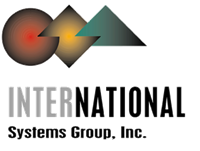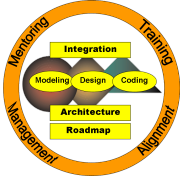- Home
- /
- Clients
- /
- Case Studies
- /
- Carey Core Case Study
Next steps:
Events:
Conference 2014
The Connected Enterprise – Cloud, Mobile, and the Internet of Things
Rome, Italy, December 2-3, 2014
Scheduled seminars
The New Integration Manifesto: Applications, Data, Cloud, Mobile, and the Internet of Things
October 27-28, 2014
Application Development in the Age of Cloud and Mobile
December 11-12, 2014
Case Study: Migrating to A Service Oriented Architecture

Carey International is one of the world's leading Chauffeured Services companies.
Carey provides services to its customers via Carey owned subsidiaries, affiliates, licensees and farm outs (i.e. agreements with third party providers). The IT environment at Carey subsidiaries consisted of locally installed and managed applications, which managed reservations, dispatched jobs to chauffeurs, and handled end-of-job functions. The IT environment at Carey corporate headquarters included legacy systems that supported the Carey Web site and call centers, a billing system that handled generation of invoices, as well as an ERP package.
The multitude of applications that were deployed at the subsidiaries as well as the inflexible legacy systems that ran in the Carey headquarter had grown into an “accidental architecture” that was hampering the business. Specifically, about 80% of reservations were made at one of the local offices and only about 20% reservations were made at the call center or via the company web site. This created a huge integration problem and a lot of manual labor especially when it came to handling exceptions.
The scope of the project included:
- Consolidation of the reservation system -- A wholesale re-implementation of the legacy reservation system was considered to be too costly and introduce too much risk in the first phase of the project. The company decided for a strategy that consisted of migrating the legacy Java/CORBA code to the new J2EE environment, encapsulation of existing functionality as services where possible, and surrounding the legacy application by new services, such that the functionality of the legacy system could gradually be decommissioned.
- Replacement of the billing system -- The new billing system should replace the central legacy 4GL system (i.e. “Friendly Billing”), local systems installed in some subsidiaries, and streamline the billing process for a number of subsidiaries that used a manual process to transfer billing to the central system. In addition, it would allow chauffeurs to send adjustments of the originally quoted price directly from their handheld devices to the central system.
- Replacement of the local dispatching applications -- All dispatching application that had been deployed locally in various subsidiaries should be replaced by a new central dispatching system.
- Implementation of a SOA foundation -- The migration of the reservation system and the re-implementation of the billing system and the dispatching applications was the primary goal of the project. However, the company wanted to capitalize on the opportunity and start building a SOA foundation that consists of common infrastructure services and common application services, i.e. services that can be reused across several business processes.





